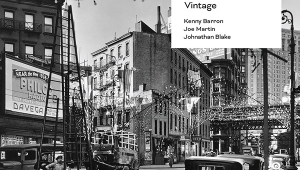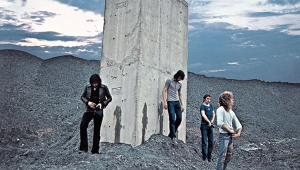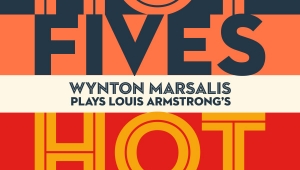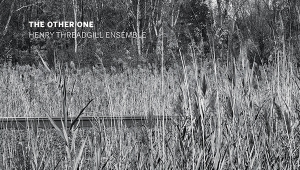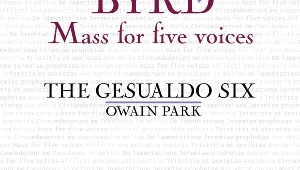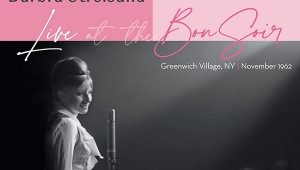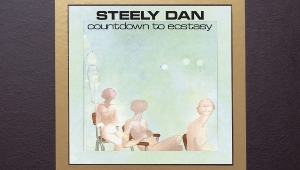| Columns Retired Columns & Blogs |
Recording of November 2006: The Lineup
ONE FOR ALL: The Lineup
Eric Alexander, tenor sax; Jim Rotondi, trumpet, flugelhorn; Steve Davis, trombone; David Hazeltine, piano, Fender Rhodes; John Webber, bass; Joe Farnsworth, drums
Sharp Nine CD 1037-2 (CD). 2006. Marc Edelman, prod.; Katherine Miller, eng. DDD. TT: 57:42
Performance ****½
Sonics ****
Eric Alexander, tenor sax; Jim Rotondi, trumpet, flugelhorn; Steve Davis, trombone; David Hazeltine, piano, Fender Rhodes; John Webber, bass; Joe Farnsworth, drums
Sharp Nine CD 1037-2 (CD). 2006. Marc Edelman, prod.; Katherine Miller, eng. DDD. TT: 57:42
Performance ****½
Sonics ****
 There is an apparent contradiction at the heart of the jazz aesthetic. On the one hand, the jazz art form demands constant innovation. The worst putdown a jazz musician can hear is not that he or she can't play, but that she or he sounds like someone else. On the other hand, a single format that has dominated the music since about 1945, when a certain Mr. Parker appeared on the scene. Bop is still the jazz culture's default language.
There is an apparent contradiction at the heart of the jazz aesthetic. On the one hand, the jazz art form demands constant innovation. The worst putdown a jazz musician can hear is not that he or she can't play, but that she or he sounds like someone else. On the other hand, a single format that has dominated the music since about 1945, when a certain Mr. Parker appeared on the scene. Bop is still the jazz culture's default language.
The style, of course, has been expanded and refined over 60 years, but basic elements often recur: unison opening and closing theme statements, an essential core of solo improvisations over a progression (often complex) of chords (often altered), irregular phrasing, metric relativity (even with four beats to the bar on the ride cymbal), and standardized instrumentation (see personnel above for the sextet version). Today, other styles of jazz derive their identities in terms of their relationship to bop: as reaction, variation, reformation, or rejection.
It takes less than one track for The Lineup, by a cooperative band that calls itself One For All, to explode this apparent contradiction. The first tune, "Anatolia," erupts with Joe Farnsworth's drum detonations, and then three horns—Eric Alexander's tenor sax, Jim Rotondi's trumpet, Steve Davis' trombone—spit hellfire and damnation in unison. Those horns race away, still together, blaring, tracing the twists of a convoluted melodic line. When Alexander is sprung loose from the ensemble, hollering, he flies free, swooping and soaring.
It is the pure adrenaline rush of bebop unleashed. As a high, it is uniquely complete, because its physicality slams the body, its complex virtuosity stimulates the mind, and its truth stirs the soul.
Jazz can require originality while sustaining a dominant traditional form because modern bop is so open, so flexible, so creatively provocative, so self-renewing that its potential for personal expression, individual and collective, is infinite. "Anatolia" has the ferocious tempo and intricate head that is classic to the genre. But the fanfare of its melody is fresh, and the solos of pianist David Hazeltine and the three horns all offer different ingenious extensions of the song's thematic and harmonic starting points.
The members of this sextet are not household names, but are among the most in-demand players in New York. They are involved in a vast array of musical projects, and have, in aggregate, appeared on over 400 CDs, 60 of them as leaders. As a band, One For All has made 11 records in the last nine years. Their continuity of personnel is almost unprecedented for jazz—only the bass chair has changed. No wonder they're tight. They democratically share composing and soloing responsibilities. Alexander wrote "Anatolia" and the almost equally intense but more thoughtful "Little Lucas," where the voicings create the sonic scope of a little big band. Rotondi contributed a suave groove called "Downtown Sounds," in which the group's color palette is transformed by Hazeltine's switch to Fender Rhodes, and "Express Train," which should be called "Bullet Train." Davis' "Letter to Mary" is the session's only ballad, with minimal soloing, subtle ensemble counterpoint, and a mood more pensive than you would think this group of excitable extroverts ever experienced. Hazeltine arranged the only standard, "Sweet and Lovely," into a declamatory, angular, call-and-response bop anthem, all the song's quaintness made steel.
Everyone says they like good tunes and arrangements and ensemble work, but in bop, everyone comes for the solos. Eric Alexander has grown into one of the most consistently satisfying tenors in jazz. His tone is clarion, his ideas are lucid and his own, he is concise, and he swings his ass off. He commands attention from the moment of his entrance, usually with cleanly articulated aggression ("Little Lucas"), and sometimes with finesse ("Letter to Mary"). When an Alexander chorus builds to a keening climax, as in "Smooth," it means something, because his path there was orderly, and he earned it.
Anyone unfamiliar with Jim Rotondi will be startled by the imaginative precision of his trumpet work on this record. He can do what he wants: evolve extended, ornately detailed designs ("Downtown Sounds"), hit warp speed for fun ("Express Train"), or provide crackling commentary on a song's distant implications ("Sweet and Lovely").
In Steve Davis' hands, the trombone is a fleet, fluent musical medium. He leads off the title track with a statement whose graceful patterns of accentual variation should be studied by drummers. On his own "Smooth" he is just that.
The Lineup would not possess its snap and edge and headlong plunging urgency without its world-class blue-collar rhythm section of Hazeltine, bassist John Webber, and Farnsworth. Speaking of snap and edge, the recorded sound by engineer Katherine Miller is inseparable from this music's incisive intelligence. Like almost everyone else these days, Miller records digitally into Pro Tools. An analog or DSD session might have had more air and warmth, but in a small space in New York called The Studio, with only the bass and drums isolated, Miller gets the passion behind the sound: the muscular exertion driving Farnsworth's drumstick on his ride cymbal, the whip-crack of Rotondi's trumpet staccato, the expletive with which each Alexander note begins.— Thomas Conrad
- Log in or register to post comments



